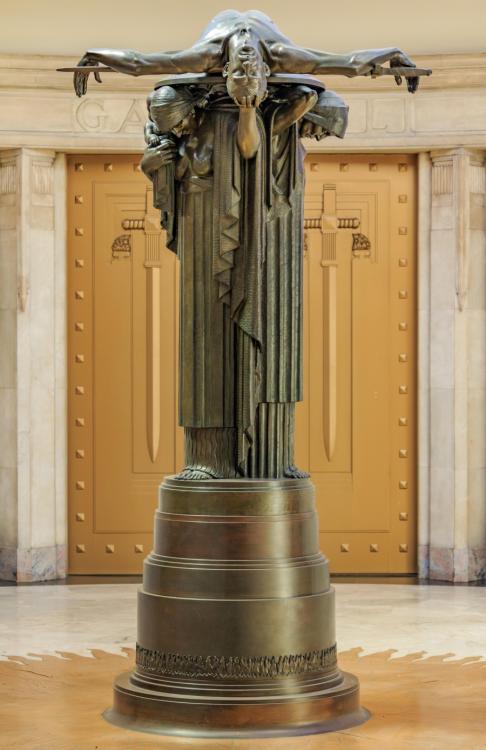The sculpture Sacrifice encapsulates the message at the heart of the Anzac Memorial. Designed by sculptor George Rayner Hoff the sculpture is based on the story of the Spartan warrior from ancient Greece. Spartan men were raised as warriors from boyhood and, when marching to war, were told to come home with their shield or on it - a warning to be victorious or die in the attempt. Rayner Hoff has created an image that depicts the weight of the dead young warrior carried on his shield by his mother, sister and wife nursing infant child. The sculpture Sacrifice uses the analogy of the Spartan warrior being returned to his loved ones dead on his shield to evoke the emotion experienced by the families of the young men who died in the Great War 1914-18.
Published in 1934, The Book of the Anzac Memorial, NSW describes the sculpture Sacrifice with great dramatic power it portrays the recumbent form of an Anzac whose soul has passed to the Great Beyond, and whose body, borne aloft upon a shield by his best loved – mother, sister, wife and child – is laid there as a symbol of that spirit which inspired him in life, the spirit of Courage, Endurance and Sacrifice. There is no pomp, no vain glory, no glamour in this group; rather there is stark tragedy, grim reality and bitter truth. But it is the truth which tells not only of the brutality of war and of the suffering it engenders, but of the noblest of all human qualities – self-sacrifice for duty."
Sacrifice is located in the Hall of Silence. A further quote from The Book of the Anzac Memorial "so that all who enter the Hall of Memory must gaze down upon it, thereby making physical and mental acknowledgement of the spirit which it symbolises..."
Sacrifice was cast at the Morris Singer Foundry, London.

